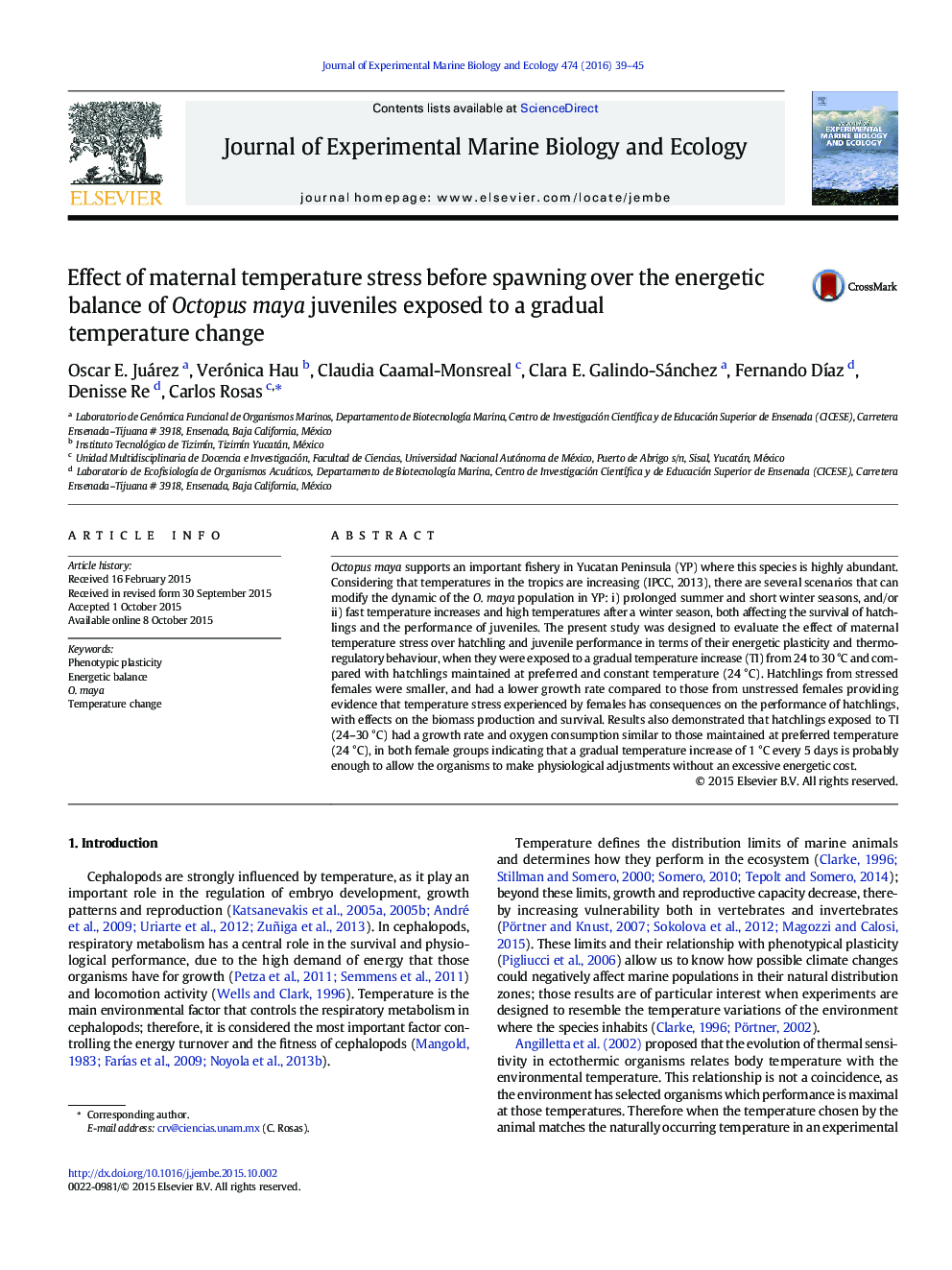| کد مقاله | کد نشریه | سال انتشار | مقاله انگلیسی | نسخه تمام متن |
|---|---|---|---|---|
| 4395301 | 1618401 | 2016 | 7 صفحه PDF | دانلود رایگان |
• We evaluated how parental thermal history affected thermal tolerance and hatchling energetic plasticity.
• Hatchlings from stressed females were the smallest and had lower growth.
• Small hatchlings showed a similar thermal tolerance to hatchlings from unstressed females.
• Hatchlings from stressed females had a high routine metabolic rate which affected their energetic balance.
Octopus maya supports an important fishery in Yucatan Peninsula (YP) where this species is highly abundant. Considering that temperatures in the tropics are increasing (IPCC, 2013), there are several scenarios that can modify the dynamic of the O. maya population in YP: i) prolonged summer and short winter seasons, and/or ii) fast temperature increases and high temperatures after a winter season, both affecting the survival of hatchlings and the performance of juveniles. The present study was designed to evaluate the effect of maternal temperature stress over hatchling and juvenile performance in terms of their energetic plasticity and thermoregulatory behaviour, when they were exposed to a gradual temperature increase (TI) from 24 to 30 °C and compared with hatchlings maintained at preferred and constant temperature (24 °C). Hatchlings from stressed females were smaller, and had a lower growth rate compared to those from unstressed females providing evidence that temperature stress experienced by females has consequences on the performance of hatchlings, with effects on the biomass production and survival. Results also demonstrated that hatchlings exposed to TI (24–30 °C) had a growth rate and oxygen consumption similar to those maintained at preferred temperature (24 °C), in both female groups indicating that a gradual temperature increase of 1 °C every 5 days is probably enough to allow the organisms to make physiological adjustments without an excessive energetic cost.
Journal: Journal of Experimental Marine Biology and Ecology - Volume 474, January 2016, Pages 39–45
